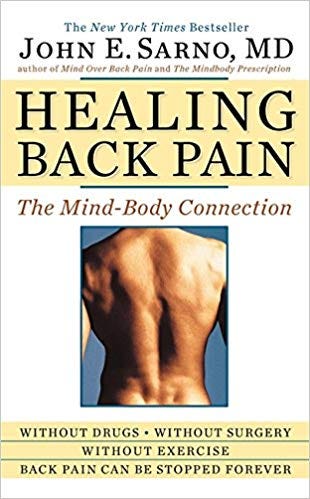
Final ThoughtsĬhronic lower back pain is a prevalent and costly condition. Patients with the most severe pain and functional disabilities may need additional therapy that includes medication, acupuncture, and physical therapy.

A key part of Cognitive Behavioral Therapy for Lower Back Pain is becoming aware of ‘early warning signs’ so they can be acted upon before pain becomes a problem.Ĭognitive Behavioral Therapy for Lower Back Pain focuses on the mind-body connection and how emotions affect physical health, partially through stress hormones such as cortisol, which have been linked to chronic pain. They also explore how a patient’s thoughts and emotions affect the sensations in the lower back. The sessions are interactive and aim to help patients become aware of patterns that can trigger their pain, such as poor time management or expectations set too high by family members. The remaining sessions are spent talking about memories in the patient’s life that may be linked to the pain, identifying repressed emotions, and working out strategies to deal with them. The first session is about education and explaining how pain might develop.


How Cognitive Behavioral Therapy WorksĬognitive Behavioral Therapy for Lower Back Pain takes place in six to eight weekly sessions, with each session lasting an hour. He teaches people to reinterpret the pain in a positive way, as a sign that they can now initiate the healing process. Sarno’s approach focuses on getting patients to become aware of these unconscious emotions and how they affect their physical well-being through persistent pain.

The pain creates fear, which further suppresses emotions, resulting in a vicious cycle.ĭr. Core beliefs are often formed in childhood and are the result of unresolved emotional conflicts. He believes that most people who develop lower back pain have repressed anger toward someone else or themselves, which he calls ‘core beliefs’. Sarno, when people unconsciously repress feelings or emotions they often experience physical symptoms in the body as a consequence of the unconscious mind acting to protect them in some way. It is based on his belief that most lower back pain results from unconscious emotional factors, particularly feelings of stress and anxiety that are held in the muscles of the lower back and abdomen.Īccording to Dr. John Sarno, a clinical professor of rehabilitation medicine at New York University School of Medicine. A Brief HistoryĬognitive Behavioral Therapy for Lower Back Pain was developed in the mid-1970s by Dr. The goal is to increase function and reduce pain. Cognitive Behavioral Therapy for Lower Back Pain is a treatment approach that uses a combination of techniques to help people identify and correct faulty patterns of thoughts, feelings, and behaviors.


 0 kommentar(er)
0 kommentar(er)
